
Tranalysis
On November 5, the sub-forum of the 7th Hongqiao International Economic Forum "New Energy Storage Driving Future Energy Transformation" was held at the National Convention and Exhibition Center (Shanghai). This sub-forum is hosted by the Ministry of Commerce and hosted by the Institute of Science and Technology Strategy Consulting of China Academy of Sciences and The Paper News.
At the sub-forum, Ren Jingdong, member of the Party Leadership Group and Deputy Director of the National Energy Administration, Laureano Ortega Murillo, Advisor to the President of Nicaragua on Investment, Trade and International Cooperation and Leader of Cooperation with China, and Science and Technology Strategy Consulting of the Chinese Academy of Sciences Chen Wenkai, Secretary of the Party Committee and Vice President of the Institute, delivered an opening speech. Huang Zhen, academician of the Chinese Academy of Engineering and chair professor of Shanghai Jiao Tong University, Niu Dongxiao, academician of the International Academy of Eurasian Sciences and deputy director of the Academic Committee of North China Electric Power University, Li Zhong, academician of the International Academy of Eurasian Sciences and chief engineer of CNOOC Research Institute, 2019 Nobel Prize winner Stanley Whittingham, professor at Binghamton University of New York, and Zhao Tianshou, academician of the Chinese Academy of Sciences and president of the Institute of Carbon Neutrality Energy at Southern University of Science and Technology, gave keynote speeches.

Ren Jingdong, member of the Party Leadership Group and Deputy Director of the National Energy Administration
In the speech session, Ren Jingdong, member of the Party Leadership Group and Deputy Director of the National Energy Administration, pointed out that the establishment of a sub-forum on energy issues for the first time at the 7th Hongqiao Forum reflects the general concern of countries around the world for energy transformation and development. China has achieved leapfrog development in the field of new energy, providing a new feasible path for the development of China's energy security. It also brings new challenges to the safe and stable operation of the power system. There is an urgent need to accelerate the development of power system regulation capabilities represented by new energy storage. China supports the diversified and high-quality development of new energy storage. As of the end of September, China has built a total installed capacity of more than 58 million kilowatts of new energy storage technologies. Innovations in new energy storage technologies continue to emerge, the level of dispatch and application continues to improve, and its effectiveness continues to increase. It has become an important part of the power system and is the development of new quality productivity. One of the new driving forces.

Laureano Ortega Murillo, Advisor to the President of Nicaragua on Investment, Trade and International Cooperation and Leader of Cooperation with China
Laureano Ortega Murillo, adviser to the President of Nicaragua on investment, trade and international cooperation and leader of cooperation with China, said in his speech that new energy is the strategic focus of the Nicaragua government. Nicaragua is a successful model of energy transformation in Latin America. The proportion of renewable energy used in Nicaragua has increased from 28% to 70%. Nicaragua and China have extensive cooperation in the energy field, including photovoltaic energy projects, large-scale hydropower projects and transmission facilities, which have effectively improved Nicaragua's energy supply capabilities and promoted sustainable energy development. Nicaragua firmly supports global cooperation initiatives such as the Belt and Road Initiative proposed by President Xi Jinping, and is willing to continue to deepen cooperation with China and jointly promote the building of a community with a shared future for mankind.

Chen Wenkai, Secretary of the Party Committee and Vice President of the Institute of Science and Technology Strategy Consulting, China Academy of Sciences
Chen Wenkai, Secretary of the Party Committee and Vice President of the Institute of Science and Technology Strategy Consulting of China Academy of Sciences, said that the development prospects of new energy storage are broad. The iterative progress of energy storage technology will effectively promote the open sharing of energy production and consumption, achieve multi-energy collaboration, support the construction of the energy Internet, and promote The development of new energy formats has become an important area for countries around the world to seize new heights in energy strategies and equipment manufacturing. In recent years, my country's new energy storage industry has made significant progress in technical equipment research and development, demonstration project construction, business model exploration, and policy system construction. The scale of market application has steadily expanded, and its supporting role in energy transformation has become increasingly apparent.

Huang Zhen, academician of China Academy of Engineering and chair professor of Shanghai Jiao Tong University
Huang Zhen, academician of China Academy of Engineering and chair professor of Shanghai Jiao Tong University, said in his keynote speech that in the future, more and more green electricity that cannot be connected to the Internet can be made into fuel and stored. We call it electric fuel. At present, green electricity has emerged to produce hydrogen, ammonia, and synthetic fuels. This is not only a storage of new energy, storing difficult to consume wind and light resources, but also an important way to decarbonize fuels. Current fuels are refined from petroleum, and green electricity can be used to make fuels in the future. Battery energy storage is energy storage for several hours, while renewable liquid fuels made of green electricity can maximize the energy storage time and scale. Green electricity can also be used to make methane and hydrogen production, etc., achieving cross-season and large-scale wide-area sharing. With the rapid growth of renewable energy power generation in my country, we can expect that the installed capacity of renewable energy power generation will reach more than 2.4 billion kilowatts by 2030, and may even reach 3 billion kilowatts. There will be a large amount of excess power in the future when power demand is low and when the wind and waves are booming. Using these power to prepare electric fuels can not only achieve effective storage and consumption of new energy, but also achieve energy decarbonization, providing effective solutions for my country's carbon neutrality and energy transformation.

Niu Dongxiao, academician of the International Eurasian Academy of Sciences, deputy director of the Academic Committee of North China Electric Power University, and distinguished professor of "Changjiang Scholars"
Niu Dongxiao, academician of the International Eurasian Academy of Sciences, deputy director of the Academic Committee of North China Electric Power University, and distinguished professor of "Yangtze River Scholars", said in his keynote speech that the new power system has two major characteristics: one is the ability to consume a high proportion of new energy, and the other is the source network. Load storage is refined and coordinated. The largest application scenario of new energy storage is in the power system, which is required on the generation side, the grid side, and the load side. On the power generation side, energy storage is mainly built in the power plant, called own energy storage, shared energy storage, and independent energy storage. The purpose is to alleviate the pressure on consumption and smooth the volatility and punctuality of new energy; energy storage on the grid side is mainly used for frequency modulation and voltage regulation and stable operation of power grid operation; in addition to arbitrage peak-valley price differences, load-side energy storage can also be used spontaneously for self-use, reducing electricity costs. The traditional source-with-load operation mode of the power system has changed. Precise control of the load and energy storage of the power system can achieve more stable and reliable operation of the power grid.

Li Zhong, academician of the International Eurasian Academy of Sciences, chief engineer of CNOOC Research Institute, and fellow of China Petroleum Society
Li Zhong, academician of the International Eurasian Academy of Sciences, chief engineer of CNOOC Research Institute, and fellow of China Petroleum Society, said in his keynote speech that most of the commercial projects of CCUS (Carbon Dioxide Capture, Utilization and Storage) are currently concentrated on land, and there are very few offshore projects, but the potential for offshore storage is very huge. On June 1 last year, my country's first million-ton carbon dioxide storage project at sea was officially put into use on the Enping 15-1 platform in the eastern waters of the South China Sea. In terms of collaboration between new energy and CCUS, in May last year, my country's first far-reaching sea-floating wind power platform, COOQ Guanlan, was successfully integrated into the Wenchang Oilfield Group Power Grid, opening a new era of green power transmission from offshore oil and gas fields. In September last year, my country's first offshore oil field group energy storage power station-Weizhou Power Grid Energy Storage Power Station was integrated into the Weizhou Oilfield Group power grid with full capacity. Looking to the future, the far-reaching sea scenery, tidal temperature difference energy resources are rich, and the development of deep-sea mineral resources requires great energy. The prospects for carbon utilization and storage in the far-reaching sea are broad.
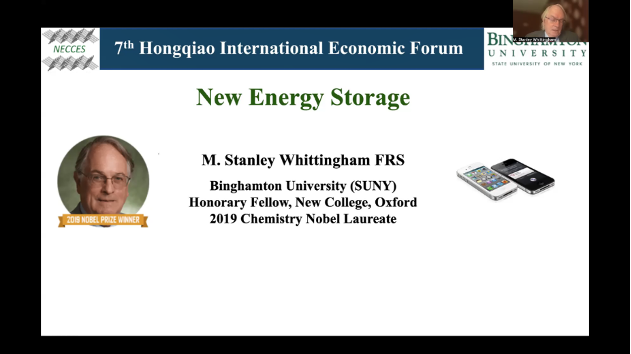
Stanley Whittingham, 2019 Nobel Prize winner in Chemistry and professor at Binghamton University of New York
Stanley Whittingham, a professor at Binghamton University at the State University of New York, and winner of the 2019 Nobel Prize in Chemistry, said in his keynote speech that it is unlikely that other products or systems will replace lithium batteries in the short term, because lithium battery production is worth hundreds of millions, and the price is already very low, making it difficult for any other system to compete with it. Whether in China or around the world, everyone is very interested in sodium-based batteries, but personally think that the market is very limited. You should know that the energy density of sodium-based batteries is only half that of lithium batteries, which requires higher system balancing costs and also has some safety-related concerns. It is unclear whether sodium-based batteries are safer than lithium batteries. In fact, they may be less safe, and this must be studied in depth.
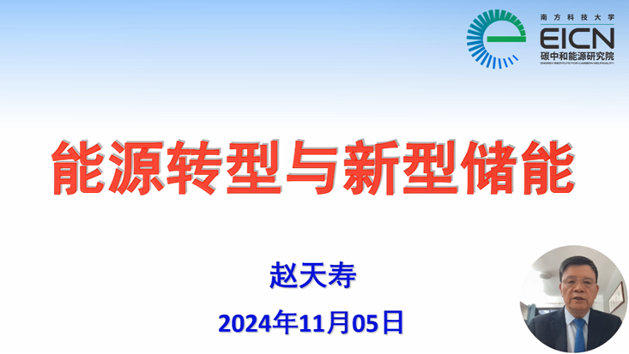
Zhao Tianshou, academician of China Academy of Sciences and dean of the Carbon Neutralization Energy Research Institute of Southern University of Science and Technology
Zhao Tianshou, academician of China Academy of Sciences and president of the Carbon Neutralization Energy Research Institute of Southern University of Science and Technology, said in his keynote speech that the current difficulty in improving the utilization scale of wind and solar new energy sources lies in how to deal with the shortcomings of solar energy and wind energy. Energy storage can stabilize wind and light fluctuations and improve its actual utilization level. Energy storage is an essential part of new power systems and will play an important role on the generation side, grid side and user side. Attention must be paid to the development of energy storage technology, especially long-term energy storage technology. The bottleneck of the current widespread application of flow batteries is cost. The current research idea is to integrate and intersect the knowledge of thermophysics and electrochemistry to study the key coupling mechanisms and control methods of flow batteries, and form a coupling theoretical framework between heat and mass transfer and electrochemistry., and then reduce costs and improve the life of flow batteries under the guidance of the theoretical framework.

round-table discussion session
During the roundtable discussion session, Xia Benjia, CEO of BlueFive Capital, Vice Chairman of Investcorp Capital plc, and member of the Executive Committee of Harvard University's Kennedy School of Politics, Wang Shaowu, Deputy General Manager and Party Member of China Southern Power Grid Co., Ltd., Shi Xiaofeng, Vice President of Sunshine Power and Optical Storage, Brian Joe, Vice President of Emerson Asia Pacific, Xiao Liye, Director of the Key Laboratory of Applied Superconductivity, Chinese Academy of Sciences, and Director of the Energy Storage Technology Research Department of the Institute of Electrical Engineering, Chinese Academy of Sciences, Wang Peng, executive director of the National Energy Development Strategy Research Institute of North China Electric Power University, expressed wonderful opinions on issues such as the development of energy storage technology, energy investment and power market, new energy grid connection and energy system security, and the construction of new power systems.
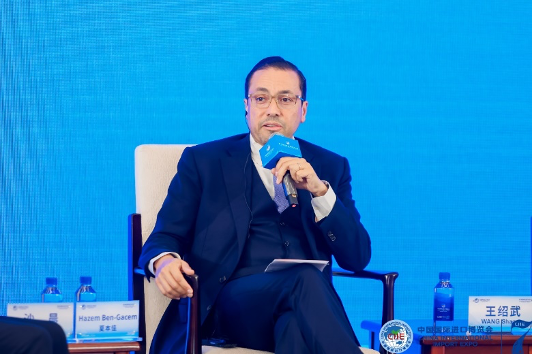
Xia Benjia, CEO of BlueFive Capital, Vice Chairman of Investcorp Capital plc, and Member of the Executive Committee of Harvard University's Kennedy School of Politics
Xia Benjia, CEO of BlueFive Capital, Vice Chairman of Investcorp Capital plc, and member of the Executive Committee of Harvard University's Kennedy School of Politics, said that the huge amount of global investment in renewable energy provides a strong impetus for the transformation of the energy market. At the same time, there are opportunities for further development and exploration of fossil fuels and nuclear energy, and new development paths for these traditional technologies and traditional energy sources can be explored.
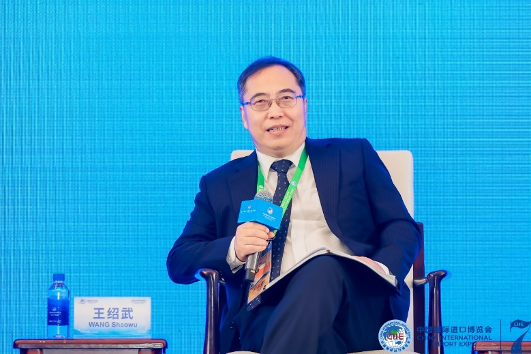
Wang Shaowu, Deputy General Manager and Party Member of China Southern Power Grid Co., Ltd
Wang Shaowu, deputy general manager and member of the party group of China Southern Power Grid Co., Ltd., said that energy storage involves major strategic and technical issues related to the realization of dual carbon goals. To talk about large-scale development and utilization of new energy, we must talk about energy storage. This is inseparable two sides of a coin. From a user's perspective, the development of electrochemical energy storage is already on the eve of a breakthrough. It is only one step away from entering the fast lane. It is necessary to provide the value positioning of new energy storage at the market level as soon as possible.
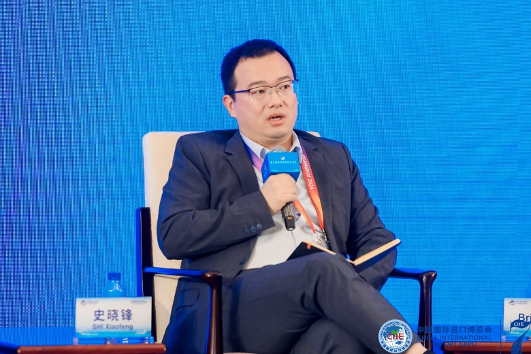
Shi Xiaofeng, Vice President of Sunshine Power and Optical Storage
Shi Xiaofeng, vice president of Sunshine Power and Optical Storage, said that there have been a lot of explorations based on the integration of the three electric powers. The largest 1.03GWH Qinghai high-altitude energy storage power station in China, which was connected to the grid at the beginning of this year, is a model case based on the integration of the three electric powers.
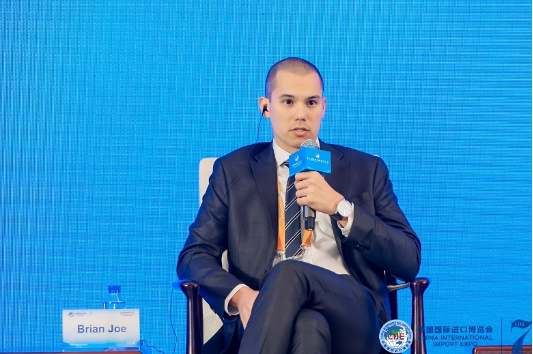
Brian Joe, Vice President, Asia Pacific, Emerson
Brian Joe, vice president of Emerson Asia Pacific, believes that hydrogen energy has huge potential, but operating conditions are harsh and there are still a series of R & D challenges, and the reliability and safety of solutions must be considered. Some experiments are being done around the world around the world on hydrogen production and hydrogen solutions, and project progress has been seen in many regions.
